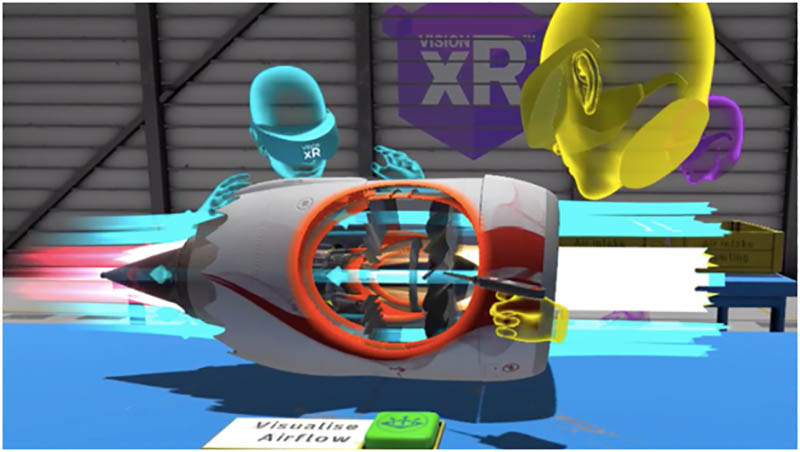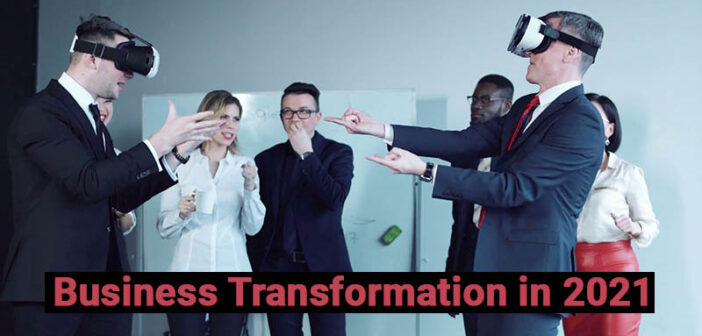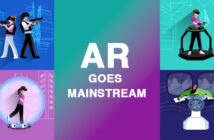The long term business impact of Covid has reinforced the need to innovate to boost productivity, build customer bases and future proof businesses. And adopting immersive technologies such as virtual reality may hold the key to success.
How can VR help businesses?
As immersive hardware becomes more widely available and affordable, coupled with advances in software technology such as remote collaboration platforms, VR has tangible and demonstrable business benefits, from helping to improve productivity, through to connecting with customers in new and unique ways, and ensuring that businesses are employing the right people, with the right skills. VR can also help reduce costs and improve a company’s environmental credentials.
VR TRAINING
Learning by doing is a tried and tested way of effectively training employees – and virtual reality takes this to the next level. VR training takes place in risk-free, virtual work spaces, where a variety of realistic scenarios give employees the chance to take a hands-on approach to hone their skills.
From highly intricate techniques required by trainee surgeons, through to procedural practices for field technicians or even soft skills training, VR training experiences facilitate practical learning. Collaborative training experiences are also possible, where interdependent team skills can be developed from anywhere in the world.

There are also many numerous benefits that virtual reality training can bring to employees’ professional development and motivation levels. This coupled with increased efficiency, a reduction in downtime and potential budget savings means that VR is a fantastic tool to support businesses dedicated to long term success.
A recent report by PWC found that learners in VR trained 1.5 times faster than e-learners and were 3.75 times more emotionally connected to content than in the classroom. Learners were 275% more confident to apply skills learned after training and four times more focused than their e-learning peers.
BUSINESS MEETINGS IN VR
Businesses that use VR can build strong remote teams globally. VR has moved remote teamwork onto the next level. VR remote collaboration platforms offer collaborative spaces where team members can interact with each other. Employees can meet and work with their colleagues in the same space in real time. The potential to connect teams in one working environment, coupled with the lower unit cost of VR hardware such as the HTC Vive and Oculus Quest 2, means that VR solutions offer cost effective ways to facilitate collaborative remote and streamline workflows.
HEALTHCARE
VR has the power to significantly improve a number of areas of healthcare including medical education, training, pain relief and trauma therapy. US insurance companies are now issuing codes for VR treatment. One can imagine in the not too distant future how VR headsets will become more of the norm both for training and treatment in the UK too.
MARKETING AND COMMUNICATIONS
VR provides a powerful tool to communicate with clients and market products and services to potential customers.
VR has the potential to capture attention and wow audiences and provoke active responses, making them an ideal marketing tool. Location-based VR can help to create meaningful experiential marketing experiences that reinforce positive brand messaging and strengthen engagement.
PRODUCT DESIGN AND DEVELOPMENT
Creating ways to design and develop products faster and in a more cost-effective way is a driving force for business innovations across a broad range of sectors. Businesses choosing to use VR can significantly accelerate the product development process and get products to market in less time.
Advances in VR means that research and development (R&D) teams can fail fast and learn quickly. This is made possible by remote collaboration platforms which provide virtual spaces to test concepts and develop prototypes, without having to invest time and money in physical prototypes. Traditional workflows are thrown out the virtual window as interdependent tasks can be carried out simultaneously, significantly speeding up the development process. R&D teams are free from expensive and time-intensive physical design processes and are given more freedom to think differently, test new ideas and innovate.
EDUCATION
Curriculum-focused, school-based virtual reality content provides great lessons to be learned by the inspirational immersive experiences that are leading the way in innovative approaches to education.
Other education initiatives have been developed to bridge the gap between academic learning and practical experience, to help to prepare students for their potential future careers. For example, A 11-18 year olds are now encouraged to learn in context for working in design and engineering in the construction industry. This includes bringing the site to the classroom through VR. By giving students the chance to gain hands-on, practical experiences of real life working situations (but in a safe environment), students are able to get inspired and gain an understanding of the realities of working in the construction sector.
The future for VR and Businesses
The VR/AR industry is predicted to grow to an $80bn market by 2025, as the introduction of kit such as Oculus Quest 2 paves the way for widespread adoption and has the potential to become a part of all our everyday lives.
As VR becomes more prevalent, the case for introducing virtual reality into businesses future corporate strategies is even more compelling.
Author – Tim Fleming, CEO, Future Visual
Tim is CEO and co-founder of Future Visual who are experts in producing award winning VR and AR content on their collaboration platform VISIONxR™. Clients and partners including ESL One, IATA, Peugeot and John Lewis.



